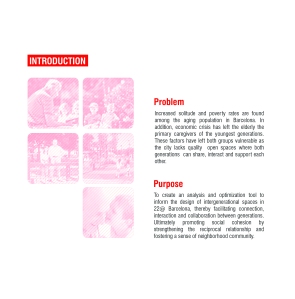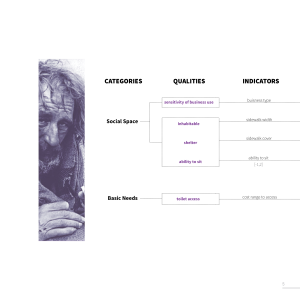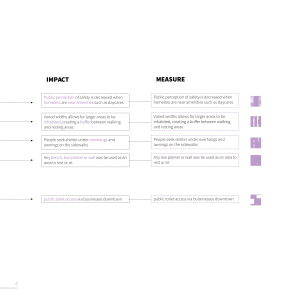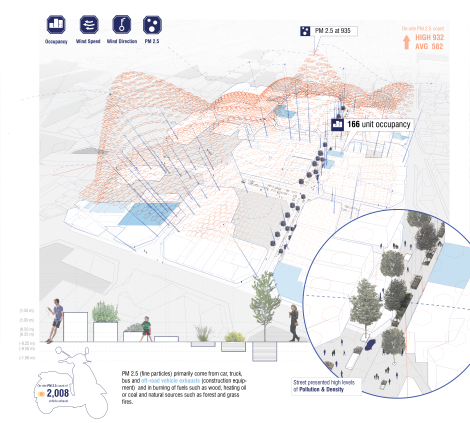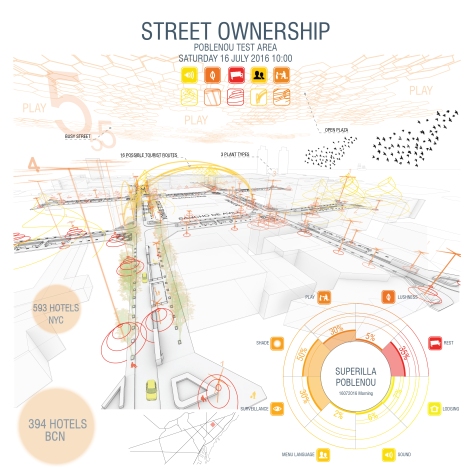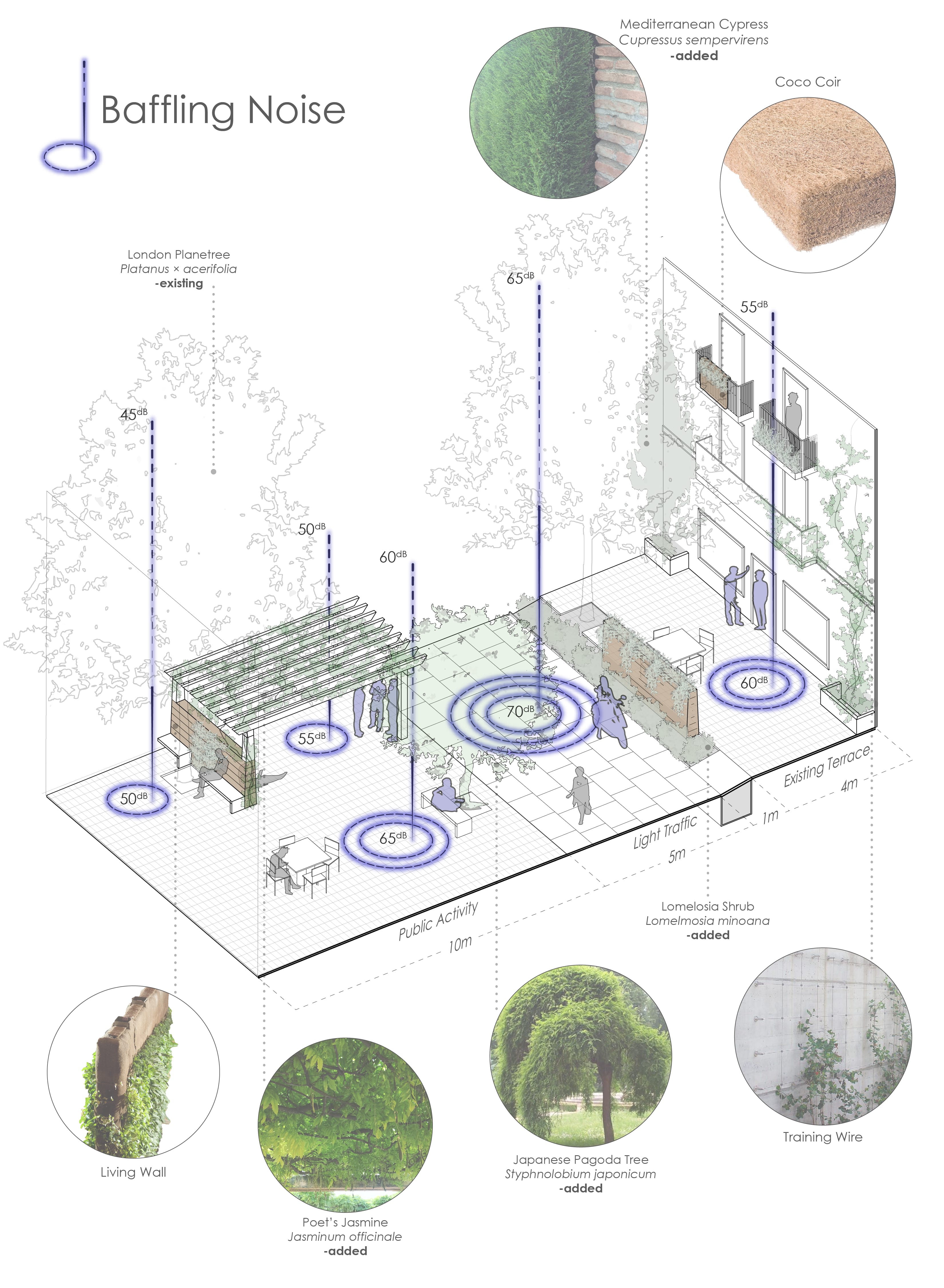Assignment #5 for Monday Part I “Mid-term”
1. TITLE
- Title: two words
- Authors
- Icon/Image of Feeling / Challenge
2. INTRODUCTION / PURPOSE: IDENTIFY PROBLEMS AND CHALLENGES TO URBAN HEALTH IN BARCELONA
- Title: Two-word title
- Purpose Sentences as typed paragraph: What is the problem/challenge of urban health in Springfield (prior in Barcelona), how is it applied to Superillas and social interaction? Who is affected (be as specific as possible); Why is it important, including social value? (highlight key words) Consider social issues and ecological issues (air, water, light, heat, animals and green light). (BCNecologia_Presentacio Superilles)
- Use the Social Interaction figure to choose two to three areas. List qualities and indicate with a symbol if it is a fixed urban quality or an urban phenomena.
- Small thumbnail pictures and/or narrow texture of swatch of qualitative image/material perhaps hinting at final output. Graphic hints: set the tone for the unit and highlight color here.
3. BACKGROUND: Context
- Outline: Diagram and or Google Sheet of Purpose / Categories / Qualities / Indicators (history) / On-site or Off-Site / Fixed or Phenomena
- Literature Review: (3) quotations of theory / reading (Password: Barcelona). **Address ideas from the reading that include: downtown urbanism; Latour’s idea of attachment; Morales’s ideas on how the Eixample Plan Cerda works; Corner’s idea of adaptability with specificity; Jacob’s idea of unpredictability; Schartz’s idea of scenarios; Guallart’s idea of self-sufficiency (post); Jan Gehl’s ideas of walkability (post); or other ideas from the readings.
- Research Superilles and current Springfield (prior in Barcelona) health and livability problems/challenges: 1- 3 recent articles as quotations or informational statistics (Register Guard, Oregonian, City of Springfield website) (prior in El Periodico, El Pais, other) (FYI, City of Barcelona is Ajuntament de Barcelona; Catalan Government is Generalitat).
- Comparative Statistics: Infographics to set a quantitative baseline big picture to small picture indicators to follow. Research climate information by month or season such as precipitation, temperature highs and lows, relative humidity, wind direction and speed, animal migration. Research effects of human behavior such as sources of sound pollution (discos, tourists, terraces, schools), air pollution (terraces, construction, restaurant hours), light pollution (cars, commerces).
4. BACKGROUND: Quantitative and Qualitative Baseline (statistics and info-graphics)
-
- Qualitative media: picture (zoomed in) of your urban design characteristics (criteria)
- Abstract scientific data: measurement of basic relationships, statistics related to measure quality (ex. 6:1 water to urban farming recommendation). Abstract and Baseline models. Ex. Cost of water Barcelona / Granada. Ex. Overnight temperature difference, humidity, income per capita, etc.
- Policy Context: Springfield, Oregon, USA. (prior in Catalan/Barcelona/ 22@ 10/10/10, BCNecologia_Presentacio Superilles, Patrimonio (Generalitat/Ajuntament) vs comparative city such as Portland, Madrid, EU. Can you find relevant law or ordinances in Barcelona, Catalunya, Spain or the EU
- Ecology: Bar charts and graphs may also be helpful, especially for quantitative contextualization.
- Sensors (on-site): What sensors might be helpful? +Find online an example with script and prototype diagram.
- Real-time Data (off-site): What databases exist?
 Figure above, Stephen Maher’s Diagram for Elephant tool and Food Cart / Food Truck Study Portland and New York.Data dimension: accessing urbandata and making it accessible,
Figure above, Stephen Maher’s Diagram for Elephant tool and Food Cart / Food Truck Study Portland and New York.Data dimension: accessing urbandata and making it accessible,
5. METHOD
- Workflow Diagram : Categories, Qualities (history), Indicators, +Data Dictionary Descriptions, +Numerical Coding, Impact, Measurement, Thumbnail Diagram and or Icon.
– Plan for each quality/indicator with icon, photographic swatch of each quality, rating system and highlighted axon of each quality.
- Use the GIS VIZ tool to create 2D plans of each quality/indicator. Plan, name, icon, scale/data dictionary


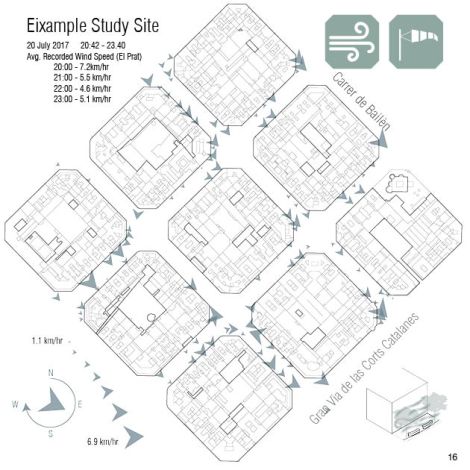
- blog category [04 Project Maps]
– Axonometric/Perspective of a storefront in the neighborhood/Superilla area highlighting your qualities. Additional storefront (ground level- human-scaled experience) of an example not in thise, area (Eugene, Portland, anywhere in the world).
– Individual 2D plans for each quality/indicator (includes all icon, rating and other explanation, axon with one highlighted characteristic
– Composite aerial (data + design): perspective view of neighborhood/ Superilla (2×5 block) area, showing +/- 3 qualities/indicators, more detail at foreground +analysis call-outs (as well as other work)
– Climate data (rain, temperature, humidity) of Springfield (Koppen, Ashrae
https://en.wikipedia.org/wiki/Springfield,_Oregon
https://en.wikipedia.org/wiki/Eugene,_Oregon
Csb = Warm-summer Mediterranean climate; coldest month averaging above 0 °C (32 °F) (or −3 °C (27 °F)), all months with average temperatures below 22 °C (71.6 °F), and at least four months averaging above 10 °C (50 °F). At least three times as much precipitation in the wettest month of winter as in the driest month of summer, and driest month of summer receives less than 30 mm (1.2 in).
– Concept images (1-3): zoomed in images of quality (swatch)
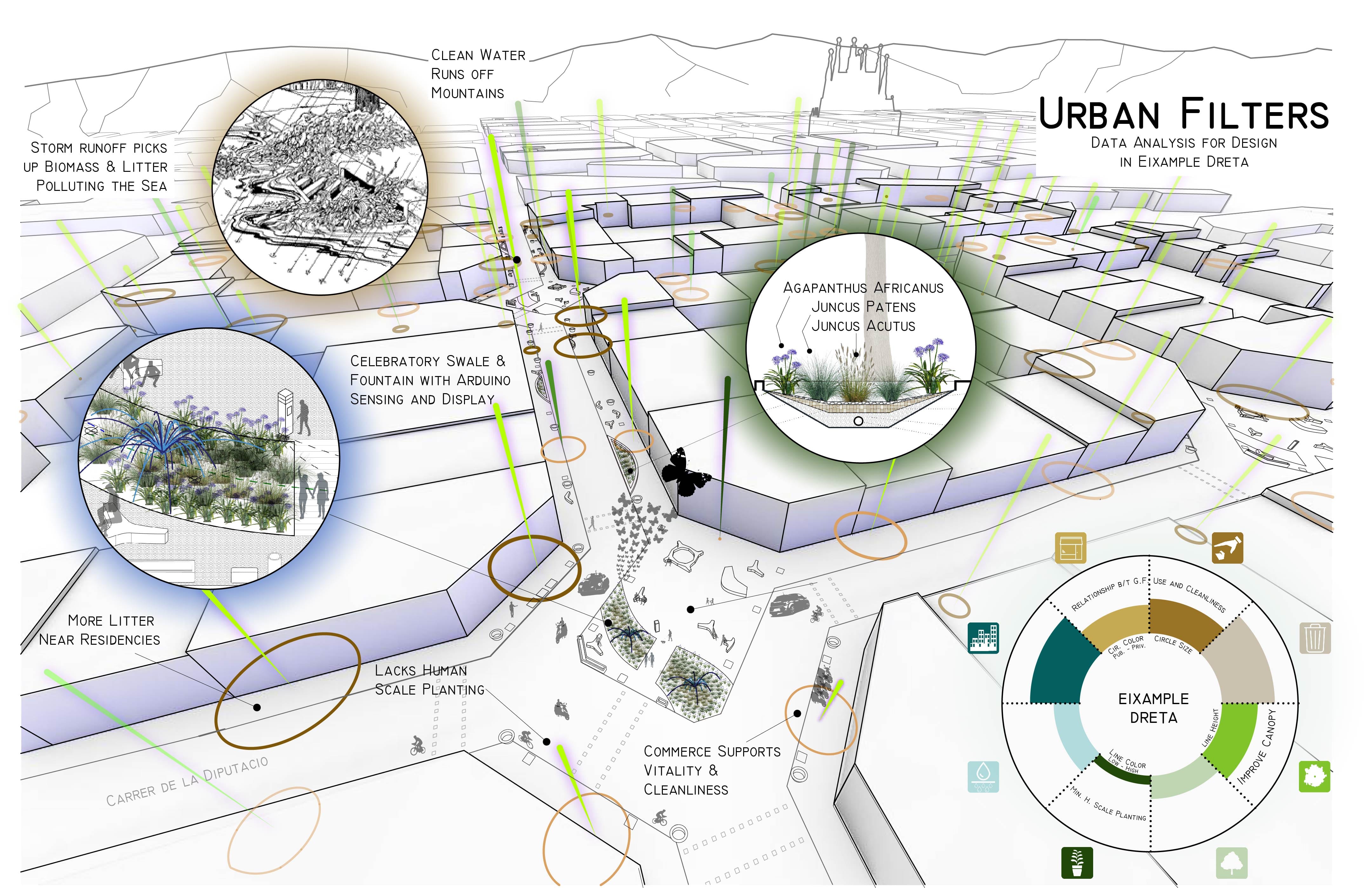
…leading to…


